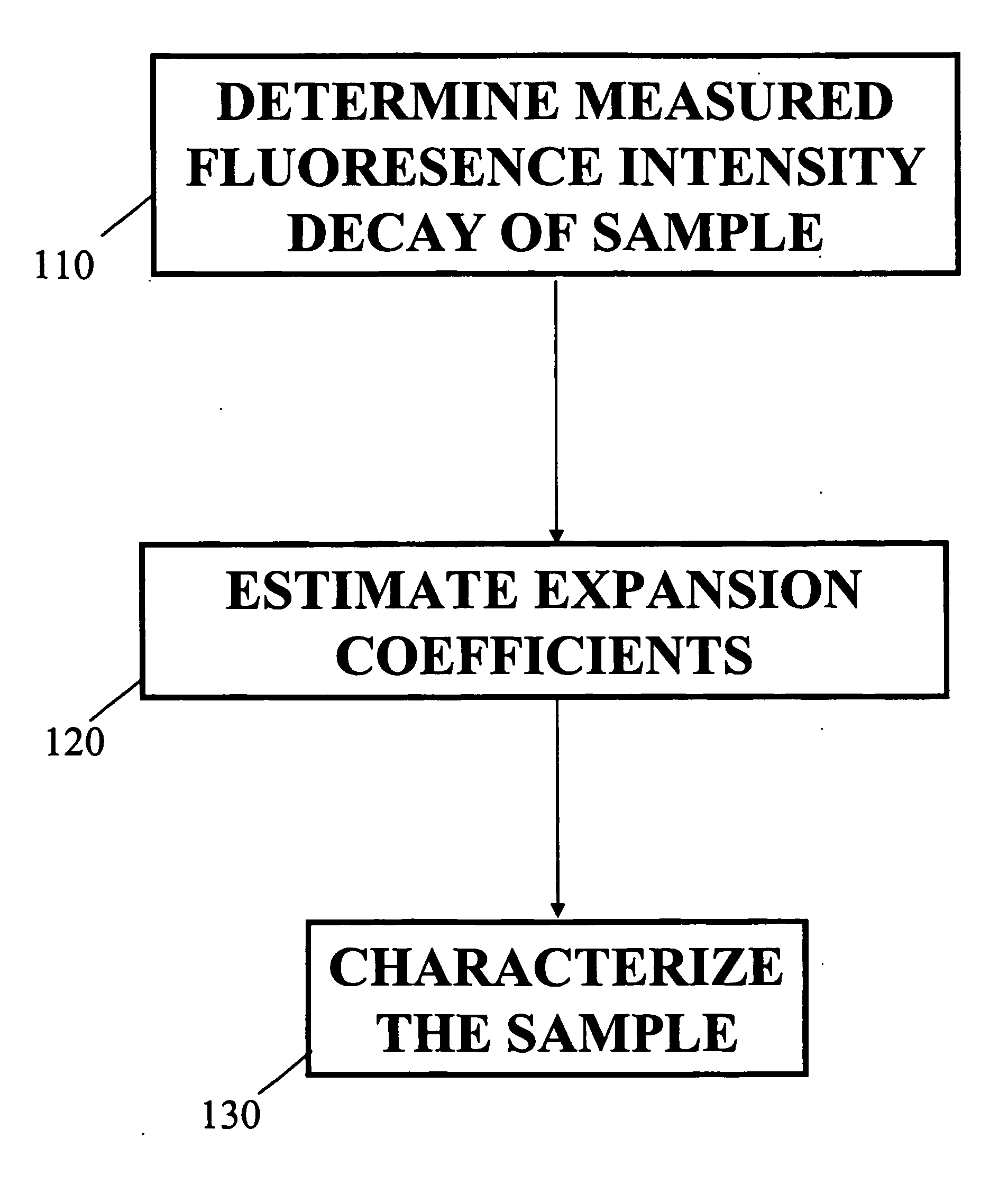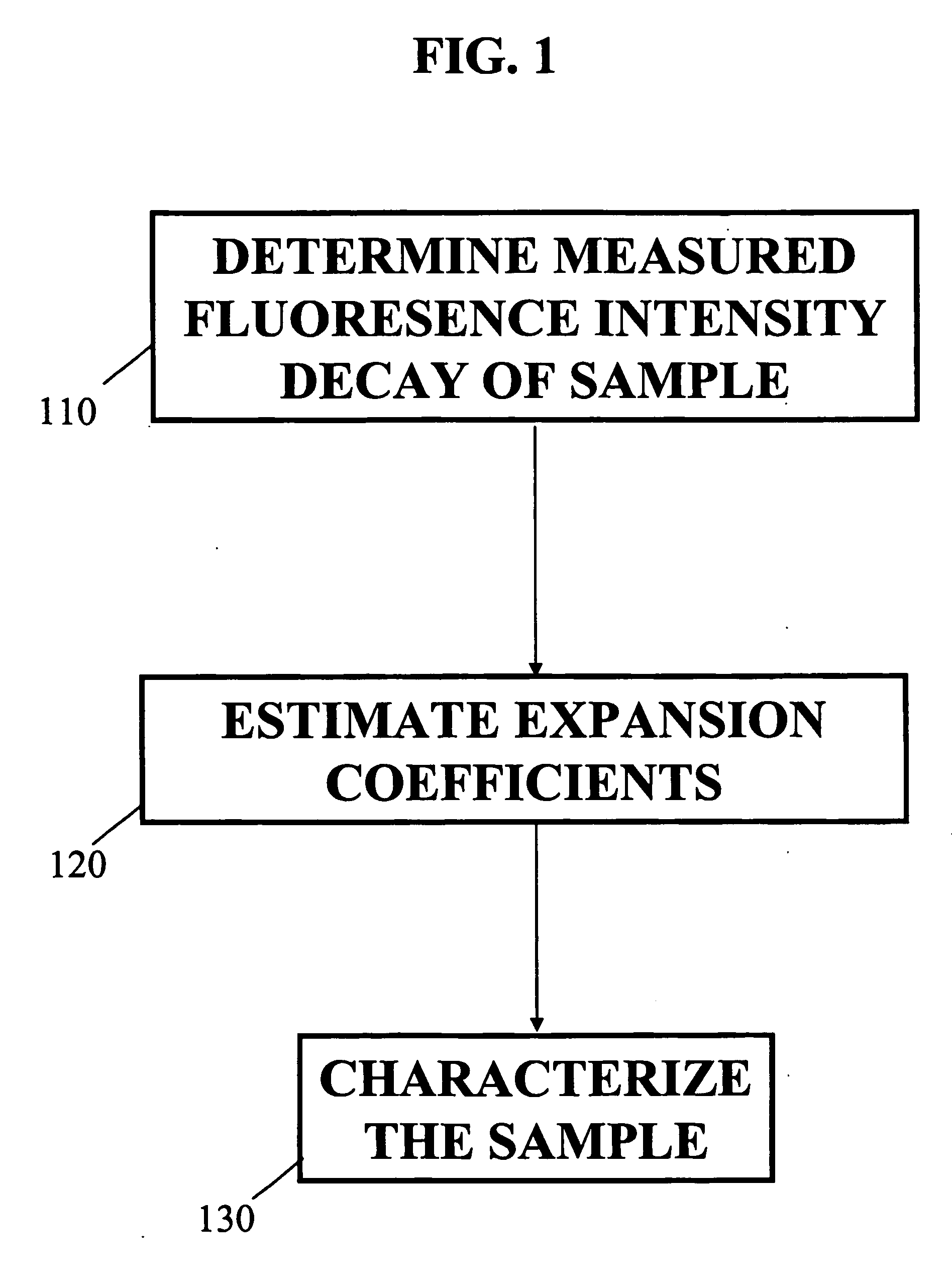Method for fluorescence lifetime imaging microscopy and spectroscopy
a lifetime imaging and fluorescence technology, applied in the field of fluorescence lifetime imaging microscopy and spectroscopy, can solve the problems of insufficiently analyzing the time-resolved fluorescence decay transient in terms of multi-exponential decay, time-consuming iterative methods for recovering time decays, and inability to meet the requirements of a short excitation pulse and a single exponential fluorescence decay in practice, etc., to achieve less expensive and complex flim
- Summary
- Abstract
- Description
- Claims
- Application Information
AI Technical Summary
Benefits of technology
Problems solved by technology
Method used
Image
Examples
Embodiment Construction
[0032]FIG. 1 illustrates a block diagram of a method for obtaining a fluorescence measurement of a sample according to an embodiment of the present invention. The sample may be excited with a short pulse of light. In Block 110 determine the measured intensity decay function of a sample. The Laguerre deconvolution technique is used to estimate the intrinsic fluorescence intensity decay of a sample. The sample may be a biological tissue, a chemical, a biochemical sample or any combination thereof, as well as any other type of sample known in the art. It should be understood that the term tissue broadly refers to any living organism that is comprised of a collection of similar cells to perform a particular function. For example the tissue may be a portion of an arterial wall, a tumorous mass or blood plasma.
[0033] The Laguerre deconvolution technique is a nonparametric method which expands the fluorescence IRF on the discrete time Laguerre basis. The Laguerre functions (LF) have been ...
PUM
 Login to View More
Login to View More Abstract
Description
Claims
Application Information
 Login to View More
Login to View More - R&D
- Intellectual Property
- Life Sciences
- Materials
- Tech Scout
- Unparalleled Data Quality
- Higher Quality Content
- 60% Fewer Hallucinations
Browse by: Latest US Patents, China's latest patents, Technical Efficacy Thesaurus, Application Domain, Technology Topic, Popular Technical Reports.
© 2025 PatSnap. All rights reserved.Legal|Privacy policy|Modern Slavery Act Transparency Statement|Sitemap|About US| Contact US: help@patsnap.com



